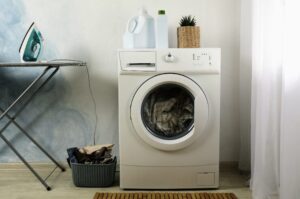Adding filters to every vent in your home might sound like a smart way to improve air quality. After all, more filters should mean cleaner air, right?
Not quite.
While it seems logical to add extra filtration at the intake or output vents of your HVAC system, doing so can cause more harm than good. These add-ons may block airflow, make your system work harder, increase your energy bills, and even contribute to mold growth.
Here’s what you need to know before stuffing filters into your vents.
🌬️ Understanding HVAC Airflow and Resistance
Your HVAC system relies on a carefully balanced flow of air. It’s designed to pull air in, heat or cool it, and then push it out evenly through the ducts and vents in your home.
Every filter, turn, or obstruction increases airflow resistance—and too much resistance strains the system. When vents are clogged or airflow is slowed, the unit has to work harder to move the same amount of air. That not only reduces efficiency, but it also increases wear on your equipment.
🧩 The Difference Between Main Filters and Vent Filters
Main filters are located in your HVAC system’s return duct or air handler—this is the one you should be replacing regularly (typically every 1–3 months).
Vent filters, on the other hand, are small filters placed inside return or supply vents throughout your home. These are usually not recommended by manufacturers.
Here’s why:
- Main filters are large and designed to filter all air before it’s conditioned
- Vent filters are small, often loosely fitted, and not rated for whole-house use
- They restrict airflow at the final stage, where air should be flowing freely into rooms
⚠️ Problems Caused by Using Extra Vent Filters
Those little filters in your ceiling or wall vents may seem harmless—but they can quietly create a host of issues over time.
- Added strain on your blower motor, which has to work harder
- Reduced heating/cooling efficiency, meaning less comfort for more cost
- Higher energy bills, especially in extreme temperatures
- Moisture retention and mold growth inside vents if airflow is restricted
- Shortened system lifespan due to overworked components
If your system seems noisy, inconsistent, or slow to heat/cool rooms—check for vent filters before calling a repair technician.
✅ What to Do Instead: Change Primary Filters Regularly
Instead of filtering at every vent, focus on changing your main HVAC filter more often—especially during peak seasons.
- Use a MERV 8 to MERV 11 filter for a good balance of air quality and airflow
- Check it monthly and replace every 1–3 months depending on use, pets, and allergies
- Vacuum around return vents regularly to reduce extra dust buildup
- Keep furniture and curtains from blocking return or supply vents
This method keeps your air clean without overworking your system.
🩺 When Vent Filters Are OK (But Still Use With Caution)
There are a few specific situations where using vent filters might make sense—but even then, you should proceed carefully.
- Allergy-sensitive homes: A lightweight filter can help in a specific room (e.g., bedroom of someone with asthma)
- Homes with pets: A vent filter in pet-heavy rooms may help contain dander
- Renovations or temporary dust: Short-term use during messy projects is reasonable
If you do use them:
- Choose low-resistance, breathable filters
- Don’t place them in every room
- Change them every 30 days
- Monitor for increased humidity, noise, or system strain
✅ Wrap-Up
Extra vent filters might seem like a simple upgrade, but they often do more harm than good. By focusing on regular main filter changes and mindful system care, you’ll improve air quality, extend the life of your HVAC unit, and lower your energy costs—all without blocking your airflow where it matters most.


